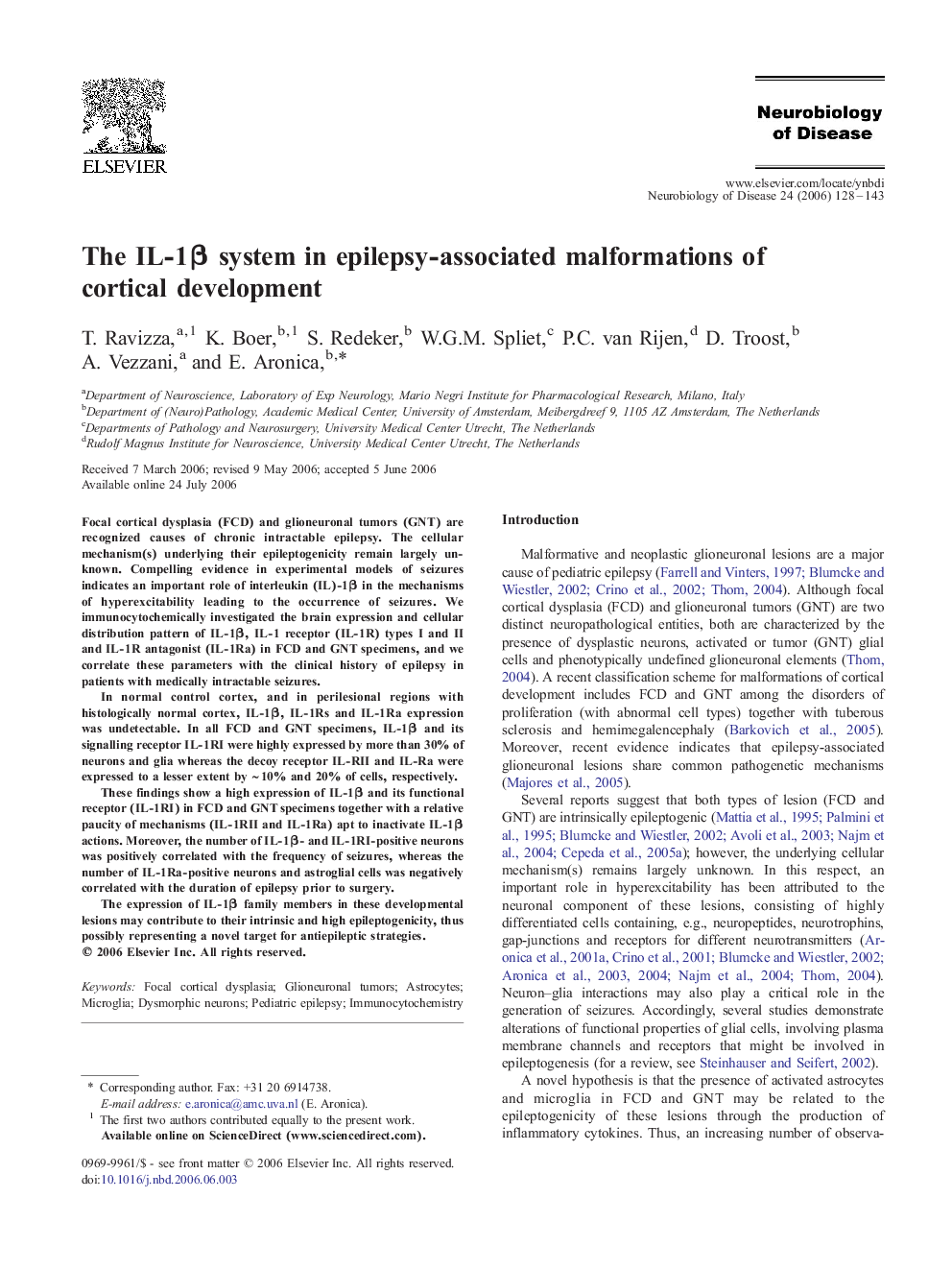| Article ID | Journal | Published Year | Pages | File Type |
|---|---|---|---|---|
| 3071097 | Neurobiology of Disease | 2006 | 16 Pages |
Focal cortical dysplasia (FCD) and glioneuronal tumors (GNT) are recognized causes of chronic intractable epilepsy. The cellular mechanism(s) underlying their epileptogenicity remain largely unknown. Compelling evidence in experimental models of seizures indicates an important role of interleukin (IL)-1β in the mechanisms of hyperexcitability leading to the occurrence of seizures. We immunocytochemically investigated the brain expression and cellular distribution pattern of IL-1β, IL-1 receptor (IL-1R) types I and II and IL-1R antagonist (IL-1Ra) in FCD and GNT specimens, and we correlate these parameters with the clinical history of epilepsy in patients with medically intractable seizures.In normal control cortex, and in perilesional regions with histologically normal cortex, IL-1β, IL-1Rs and IL-1Ra expression was undetectable. In all FCD and GNT specimens, IL-1β and its signalling receptor IL-1RI were highly expressed by more than 30% of neurons and glia whereas the decoy receptor IL-RII and IL-Ra were expressed to a lesser extent by ∼ 10% and 20% of cells, respectively.These findings show a high expression of IL-1β and its functional receptor (IL-1RI) in FCD and GNT specimens together with a relative paucity of mechanisms (IL-1RII and IL-1Ra) apt to inactivate IL-1β actions. Moreover, the number of IL-1β- and IL-1RI-positive neurons was positively correlated with the frequency of seizures, whereas the number of IL-1Ra-positive neurons and astroglial cells was negatively correlated with the duration of epilepsy prior to surgery.The expression of IL-1β family members in these developmental lesions may contribute to their intrinsic and high epileptogenicity, thus possibly representing a novel target for antiepileptic strategies.
